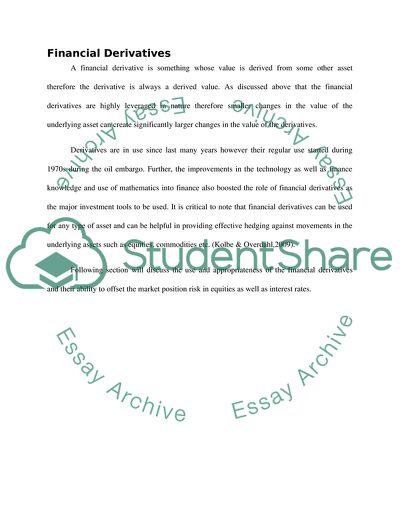Cite this document
(Derivative Securities: Risk Management Strategies for Equities and Research Paper, n.d.)
Derivative Securities: Risk Management Strategies for Equities and Research Paper. Retrieved from https://studentshare.org/finance-accounting/1732587-derivative-securities-risk-management-strategies-for-equities-and-interest-rate
Derivative Securities: Risk Management Strategies for Equities and Research Paper. Retrieved from https://studentshare.org/finance-accounting/1732587-derivative-securities-risk-management-strategies-for-equities-and-interest-rate
(Derivative Securities: Risk Management Strategies for Equities and Research Paper)
Derivative Securities: Risk Management Strategies for Equities and Research Paper. https://studentshare.org/finance-accounting/1732587-derivative-securities-risk-management-strategies-for-equities-and-interest-rate.
Derivative Securities: Risk Management Strategies for Equities and Research Paper. https://studentshare.org/finance-accounting/1732587-derivative-securities-risk-management-strategies-for-equities-and-interest-rate.
“Derivative Securities: Risk Management Strategies for Equities and Research Paper”. https://studentshare.org/finance-accounting/1732587-derivative-securities-risk-management-strategies-for-equities-and-interest-rate.


